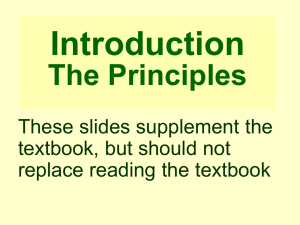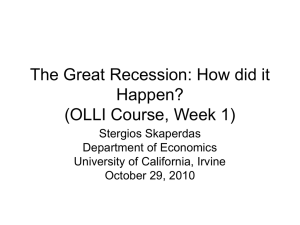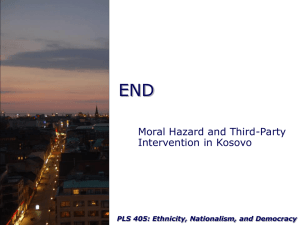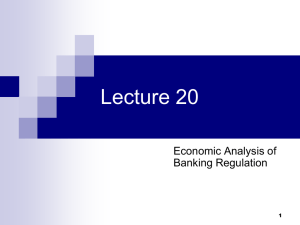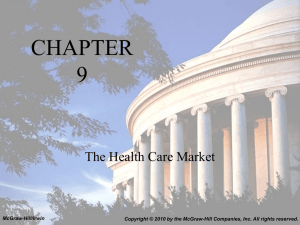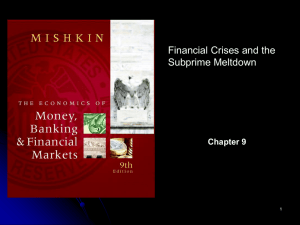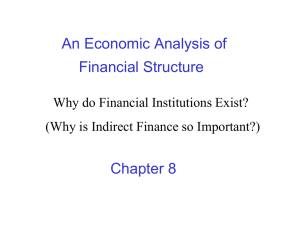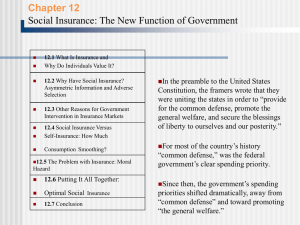Moral Hazard
advertisement
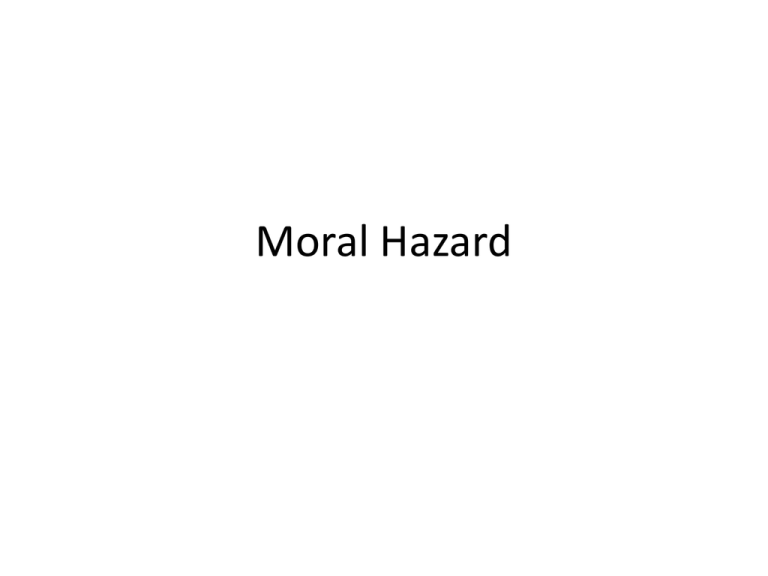
Moral Hazard Moral Hazard • Moral hazard refers to the reduced incentive to exercise care once you buy insurance. • Example: Once I buy a car insurance that pays 100% of loss, I will exercise less caution as to where I leave my car • Note that this is a behavior observed AFTER insurance buying Moral Hazard • Caution: Moral hazard can look very similar to adverse selection—both arise from information asymmetry. • Adverse selection arises BEFORE the insurance is bought • Adverse selection arises from hidden information about the type of individual you’re dealing with; moral hazard arises from hidden actions. General problem: Monitoring behavior • Car insurance companies usually cannot watch drivers if they are driving too fast or too long – both can increase the chance of an accident • In 2004, the Progressive Direct Group of Insurance Companies introduced TripSense – a service that provided a free device to record mileage, speeds and times driven in a vehicle. Moral Hazard • Progressive then used this information to offer discounted renewal policies to customers who drove fewer miles at slower speeds during non-peak hours. • This helps the insurance company solve two problems. Adverse selection, and moral hazard Moral Hazard • The decision of how frequently, how far, or how fast to drive is equivalent to choosing your probability of having an accident. • The cost of having an accident goes down when you buy insurance. • Once you have insurance, the cost of an accident is reduced, which also reduces the cost of the risky behavior. • This is the problem of “moral hazard” and exists in many contexts, not just in the market for insurance. Moral Hazard • Moral hazard and adverse selection are closely related problems. • Both are caused by information asymmetry: moral hazard results from hidden actions; while adverse selection results from hidden information • The cost of managing both problems can be reduced by reducing uncertainty (gathering more information). Moral Hazard • Suppose that bike owners stand a 40% chance of theft when parking their bike on the street overnight. • Suppose the cost of bike $1000 • Actuarially fair premium would be $400 • However, if the bike owner exercises care (locks the bike), the chance of theft is reduced to 30%. Moral Hazard • Suppose the cost of taking care (buying a lock) is $50. • For uninsured bike owners, the benefit of exercising care is (0.40 - 0.30)($1000) = $100 and is greater than the costs of exercising care, $50. • Moral hazard suggests that once customers purchase insurance, they exercise less care because there is less incentive to do so. Moral Hazard • The cost of bike theft is reduced when an insurance policy is purchased. • So, the consumer stops taking the extra time to lock up the bicycle every night once she buys insurance. • The probability of theft then increases from 30% back to 40%. Moral Hazard • The insurance company anticipates this moral hazard, and now charges $400 for every policy it sells. • If the company does NOT anticipate that the probability of theft will increase from 30% to 40%, it will lose money on the insurance it sells. • In other words, insurance companies need to anticipate moral hazard and protect itself against it. Examples • Give a moral hazard and an adverse selection explanation for each the following: • Drivers with air bags are more likely to get into traffic accidents. • Volvo drivers are more likely to run stop signs. • At all-you-can-eat restaurants, customers eat more food. Explanation • Air Bags: The adverse selection explanation is that bad drivers are more likely to purchase cars with airbags. If you know you are likely to get into an accident, it makes sense to purchase a car with airbags. The moral hazard explanation is that once drivers have the protection of airbags, they take more risks and get into more accidents. If you don’t believe that people change behavior in this way run a simple experiment – next time you drive somewhere, do not wear a seat belt. See if you drive more carefully. Explanation • Volvo Drivers: Adverse selection – people who are more likely to run stop signs will want to buy safer cars, so they will be more likely to buy Volvos. Moral hazard – once you own a Volvo, you feel safer so you will be more likely to run a stop sign • Restaurant: Adverse selection – attracts people who are more likely to be big eaters. Moral hazard – once you have paid for all you can eat, you are more likely to eat more. Key differences between moral hazard and adverse selection • Adverse Selection: • 1. Before transaction occurs • 2. Potential buyer of insurance most likely to produce adverse outcomes are ones most likely to seek insurance and be selected • Moral Hazard: • 1. After transaction occurs • 2. Hazard that buyer of insurance has incentives to engage in undesirable activities making it more likely that the bad outcome would occur

